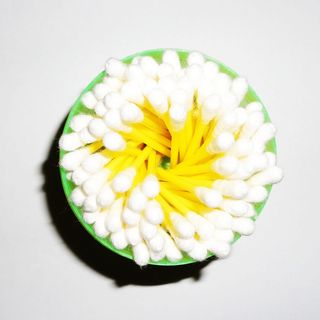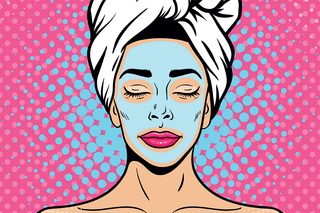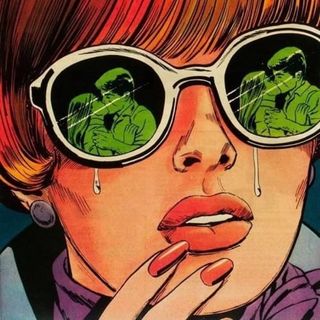
With Little Guidance, Adult Acne Sufferers Turn to Treatments That Make Skin Worse
Navigating the multi-million dollar adult acne industry leaves patients feeling bewildered — and often, with worse skin.

Urvashi Gulia spends Rs. 60,000 a year on her skin – at least.
“You try to buy more expensive things, or better things, knowing you’re sensitive. And you buy more natural brands – and they actually fucked up my skin more,” she says.
The 35-year-old who lives in Delhi has had chronic acne since she was 16. Over the years, she’s tried everything from Ayurveda to Clinique to antibiotics. Some medications have left her so dehydrated she lost her voice. Most have left her acne worse than before. She’s been to dermatologists, specialized clinics and general physicians.
One dermatologist told her, “‘Oh you’re just travelling so much [your skin] can’t help it.’”
Each experience left Gulia feeling more adrift than she did before.
“At no point did I feel any of them guided me toward what I should be using,” she says.
Gulia, like so many who fall through the cracks of the health care system, turned to the Internet for answers. She learned that trying a new product that peels or exfoliates can cause a minor breakout initially, as the skin adjusts.
“No one was telling me that stuff, and I’ve wasted a lot of money,” she says. “There has to be a simpler way,”
*
Guidance is exactly what the market lacks, says Ranjit Bhatia. Bhatia is the CEO and founder of Remedico, a digital dermatology start-up that aims to hold patients by the hand all the way from diagnosis, through treatment, to improvement.
“You have a lot of really expensive brands – and I’m talking about really high-end skin care brands — that promise you the world,” he says. So, “people think ‘the more I pay for my cosmetics, or the more I pay for my moisturizer or sunscreen, or the fancier the brand name on the product, the better my skin’s going to be.’”
“There’s almost little to no correlation,” he adds.
Remedico’s clients are young adults, educated and tech-savvy, living in metros across India. Yet, even among this group, there’s a fundamental misunderstanding of skin and hair. For instance, Bhatia says, many of Remedico’s female clients have never heard of polycystic ovary syndrome (PCOS), a common hormonal condition that can cause acne, hair fall and/or excess facial hair. “Unless you get that corrected, your acne and your hair fall are just going to keep getting worse,” he explains.
This is the inherent problem of treating acne. “It’s actually more about the process than it is about the product,” Bhatia says. “Often these treatments take a month, take two months. They can take six months. But it’s much better to go through that process and get your body healthier from the inside.” But the aesthetic nature of acne leads people to focus on the topical, rather than the internal, in pursuit of quick results.
Related on The Swaddle:
Everything You Need To Know About Skin Cancer
“There’s a lot of really, really dangerous experimentation going on,” Bhatia says, with people purchasing everything from strong steroid creams to skin lightening creams – both easily available at local chemists, no prescription required — in pursuit of better skin.
“The danger and seductive power of these creams is that, initially, they’ll give you results. If you have acne and use a steroid cream on your face, you will get results pretty quickly. But the problem is there are so many other problems that happen because your skin gets addicted to that steroid. It can cause internal problems. It can actually make your acne worse down the line,” Bhatia says. These creams “have very bad effects on your skin. Not to mention, of course, a really unhealthy vision of what beauty is.”
There’s even a dermatological term for the damage wrought by this experimentation: topical steroid dependent/damaged face. “What it means is that your skin has gotten so used to using steroid cream that as soon as you take that cream away, you break out,” Bhatia explains. “That’s a withdrawal symptom.”
And the masses are addicted. One reason driving the quest for a quick fix is the shame of having a visibly adolescent affliction during early adulthood — the years when most people are striving to be taken seriously.
“Acne is a social stigma,” says Dr Nimesh Shah, a dermatologist based in Wapi, Gujurat. The young adults, new to the workplace and eager to get ahead, who come to him ask, “’My colleagues are not having acne. Why am I having acne?’ … They want to get rid of acne by hook or crook,” he says.
While Gulia eschews make-up, and says her acne never bothered her when she was a younger, she admits that it chafes her now. “I guess when you’re older you get more conscious…. That’s what makes it so distressing as an adult. When you’re a teenager, there are 50 other people who are suffering from the same thing around you.” The self-consciousness can affect work, she says, taking her focus from performance to worrying if the people around her can look past a particularly bad breakout. And “I’m pretty sure it impacts people’s sex lives.”
“About 10 years ago I met somebody at a party, and he was being all chatty and seemed like he was really into me,” she recalls. “And in the middle of a conversation he suddenly goes like, ‘So, can you do something about those scars on your face?’ I wanted to whack him. I was like – uh, what about your brain?”
The quest for a quick fix might also come from wanting to get out of the clinic. In the course of her near-20-year journey through the skin care market and out the other side, Gulia’s experience has been that “every time I go to a facial person, like a Kaya Skin Clinic person, or if I go to a dermatologist, they’re the ones who make you more conscious about these things. … They’ll tell you all the worse things about your [skin]. … You learn to ignore those things.”
Related on The Swaddle:
Cellulite Is a Lie
For some, the truth may hurt. Dr Shah says 30 to 40 percent of acne cases he sees aren’t necessarily acne at all, but involve skin that has been treated with and damaged by steroid creams – the use of which has led to an epidemic of fungal infections across the country. Steroids reduce skin inflammation, he explains, but in doing so, they suppress immunity, allowing microbes to easily target the treated area. In 2017, the Indian Association of Dermatologists, Venereologists and Leprologists (IADVL) petitioned the Delhi High Court to bring steroid-based topical creams under the purview of prescription drug regulation. In response, the Centre promised to update the Drugs and Cosmetic Act, 1945, and classify topical creams that contain corticosteroids under Schedule H, thus restricting their over-the-counter availability.
*
There are no reliable statistics for adult acne in India; globally, the incidence of acne vulgaris – the technical name for breakouts, both dire and light – increased by 10 percent between 2006 and 2016. In India, a small study in 2012 found persistent acne among 73.2 percent of 280 participants whose average age was 30. Roughly a quarter of them experienced acne for the first time in adulthood, rather than in adolescence, when acne onset is more common.
“Adult acne is predominant in women, and as compared to adolescent acne is more inflammatory, with involvement of the cheeks and lower half of the face,” the study concluded. “Facial scarring occurs in a majority and stress is common, which emphasizes that adult acne should not be neglected.”
Dr Shah says he has noticed a change in the profile of acne patients in recent years. He has started to see acne occurring at younger ages, as well as increasingly among adults. He attributes this mostly to the lifestyle changes that have given rise to other, more serious health conditions in India, such as diabetes and obesity. Sedentary lifestyles, chronic stress and poor diets are increasing Indians’ body fat, which in turn can affect hormones and stimulate the skin’s oil glands in ways that cause acne.
On top of that, Dr Shah says, there are “many other factors for adult acne.” He lists them: “hormones, oily skin. Weather, [which] is such that winter is only one month – hot and humid weather most of the year. Dandruff can also contribute to acne. Stress and tension, improper diet, glycemic issues.”
It’s a laundry list with which most people would be able to identify. Perhaps that’s why India’s acne market nearly doubled between 2012 and 2016, when it was valued at USD78.5 million, and is expected to reach USD164 million by 2026 – driven largely by people like Gulia, who are just looking for a little guidance, and one or two fewer bumps on their faces.
But whether this market growth will include actual information and patient, individualized treatments for acne-prone individuals remains to be seen. Gulia doesn’t seem hopeful; she says the specialized clinics she has consulted seemed more interested in peddling their own products than in listening to her experience and helping her problem-solve.
*
“I had no idea what was going with my skin. Nothing worked. Or if it did, it didn’t for long,” Kali Kushner told The Guardian of developing adult cystic acne, a severe form of acne vulgaris, at age 20. Kushner, who runs the Instagram account @myfacestory, is one of several faces of the burgeoning acne positivity movement in the West. Ostensibly, it’s a response to “years of oppressive aesthetic perfection,” writes Laura Barton, the article’s author. But like other positivity movements, it feels as much a protest of the lack of attention and informed control, as it is of societal judgment.
Acne isn’t killing anyone. It’s not leaving anyone incapacitated in its wake. It doesn’t require any government subsidies for treatment, or public health campaigns. But if adult acne really is an increasingly common condition — one that is often a symptom of other health problems, and one that easily causes worse health problems through mistreatment — positivity seems the least society can offer. Seldom in history has negativity led to a solution — or to a multimillion dollar industry that’s more than a scam.
At the end of the day, “you just want to tell everyone to calm their tits,” Gulia says. “My skin is okay. It may not be Kareena Kapoor-perfect, but it’s fine.”
Liesl Goecker is The Swaddle's managing editor.
Related


Benefits of New Ketamine‑Based Antidepressant Drug Outweigh Risks, Experts Say
